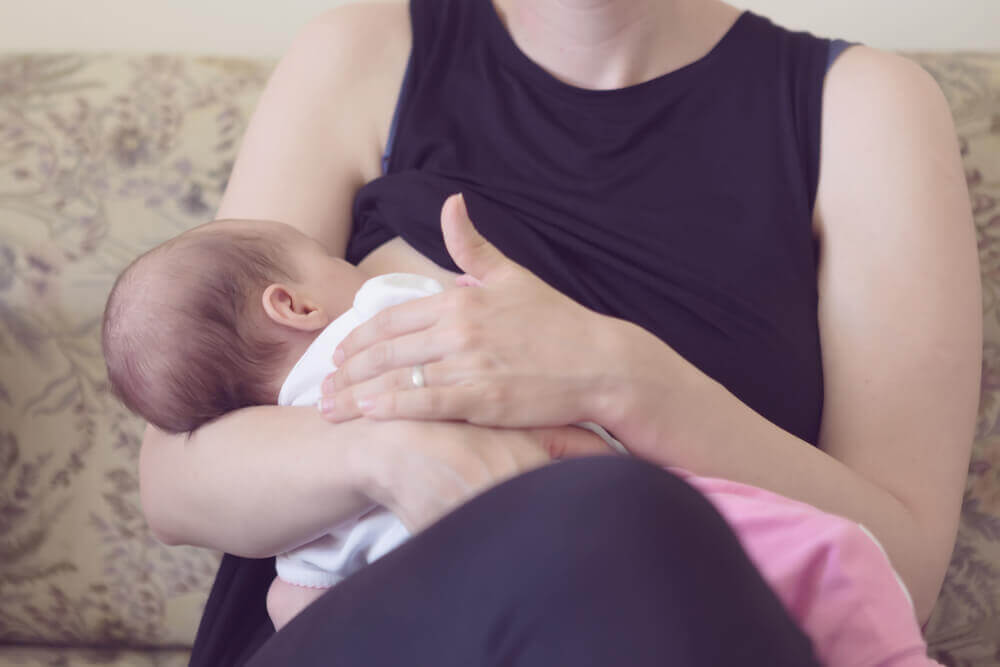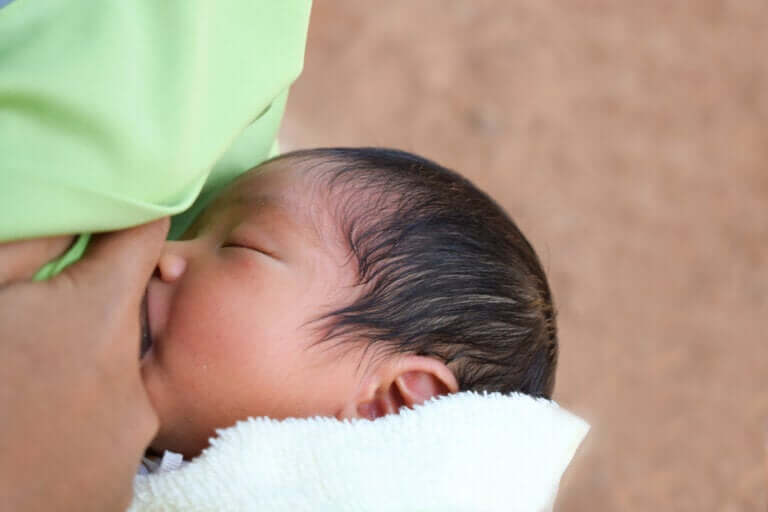Bacterial Communities in Breast Milk
During breastfeeding, bacteria colonize the baby's intestine. In addition, oligosaccharides promote their growth. Keep reading to learn more.

Many people are surprised when they find out there are bacterial communities in breast milk. In fact, 30 percent of bacteria inside breastfed babies’ intestines come from their mother’s breast milk.
Beneficial breast milk bacteria act similarly to seeds in breastfed babies’ intestines. Through this mechanism, breastfeeding selects the type of bacteria that improves metabolic regulation and immunity.
Strategic alliance that benefits bacterial communities in breast milk
Babies’ intestines receive bacteria from different origins. They can come from their mother’s milk, or even from the hospital. However, nature is wise and provides milk with two strategies: beneficial bacteria inoculation and prebiotics that help them nourish selectively.
Therefore, breastfeeding is essential in the formation of intestinal beneficial bacteria. Nowadays, science agrees that breastfed babies‘ microbiome is beneficial during childhood and adulthood.

What are beneficial bacteria?
Unfortunately, if we ask someone about intestinal bacteria, they’ll probably think about infectious agents, such as Salmonella, Escherichia coli, Clostridium difficile, and even cholera.
However, the overwhelming majority of intestinal bacteria (approximately trillions) are harmless, or even beneficial. In fact, intestinal bacteria improve metabolic regulation and immunity. This is why the intestinal microbiome is also known as “the forgotten organ.”
Your babies’ first microbes
Usually, parents take note of their babies’ first times: their first steps, first words, first day of school, and first tooth, etc.
However, even though evidence shows that early exposure to microbes influences childhood and adulthood, not many parents think about their babies’ first microbes. The first source of bacteria is the placenta, then the vagina, and finally breast milk.
Bacterial communities in breast milk
It’s important to know that bacterial communities present in breast milk are different than those from the placenta or the vagina. The different bacteria found in breast milk are:
- Bifidobacterium.
- Lactobacillus.
- Clostridium.
- Staphylococcus and Streptococcus.
Probably, the last three bacteria from the list sound familiar to you, and not in a good way. This is because these include pathogens that cause different diseases. However, they’re among the dominant bacteria included in breast milk.
Notwithstanding, it’s important to know that not all species belonging to the same genus are infectious agents. Actually, some of them might be beneficial in order to prevent intestinal colonization of more lethal agents.

The benefits of bacteria will depend on the breastfeeding duration
Different studies have proven that breast milk makes the greatest contribution during the baby’s first month. However, if breastfeeding continues, it’ll continue influencing microbes in a positive way until the weaning process.
The World Health Organization recommends exclusively breastfeeding during the first six months, and a continuation until the baby is two years old.
Curiously enough, babies who drink breast milk for two years don’t suffer from a drastic change in their intestinal microbiome when introducing solid food to their diets.
Some experts state that early intestinal microbiome development (when it looks like an adult’s microbiome) relates to different diseases, such as asthma or obesity.

